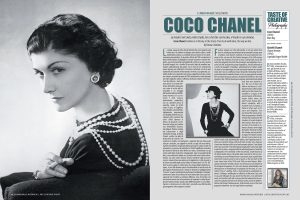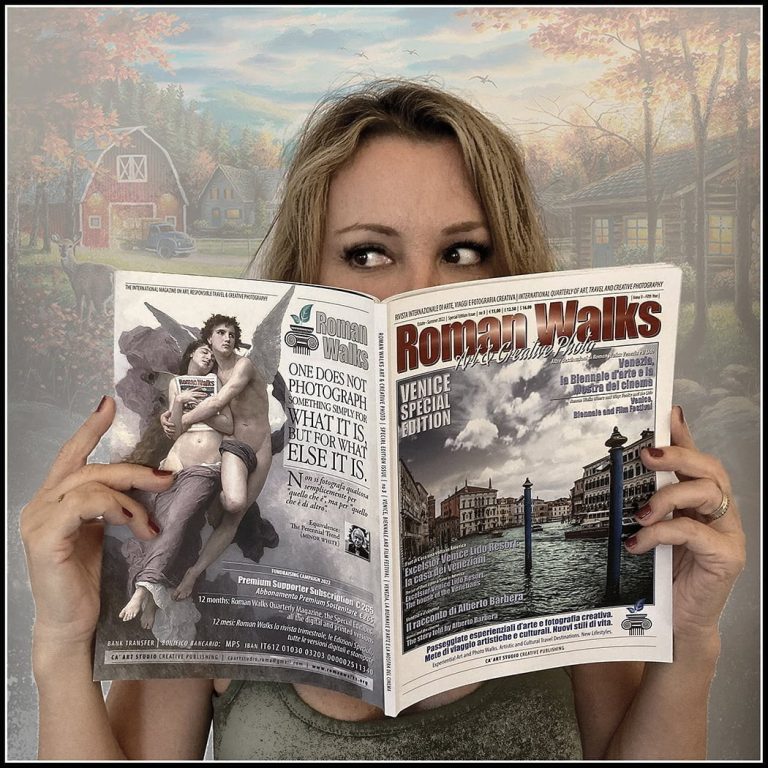Fashion, explains art critic Gillo Dorfles, is not only about dress but is a sociological and aesthetic factor extended to many areas of culture. Coco Chanel’s creativity is the most authentic testimony to this: she was the first fashion designer of the 20th century to revalue the freedom of women to dress comfortably and at the same time elegantly, free from the stereotypes and prejudices of centuries! Her life, recounted by many biographers, has the hallmarks of a myth: the daughter of peddlers, abandoned by her father, within the walls of an orphanage she had reluctantly learned the sartorial trade, but it was in a millinery shop in Deauville, Normandy, that her genius blossomed.
 Gabrielle, known as Coco, a young girl who created hats and loved to sing in cabarets, revolutionized fashion in the early decades of the 1900s by devising an original, understated and refined style that was destined to last. The use of black and white in her dresses is a childhood memory of the monk’s habit, just as the choice of essentiality is a legacy of the austere beauty of the Romanesque Abbey where she spent 7 years. Curious, determined, combative, with a character full of asperity, a friend of artists such as Picasso and Diaghilev, Coco overturned the canons of clothing by proposing a fluidity of form that compared to the creations of coeval designers freed women from any constriction of the body to enhance a discreet, never vulgar femininity. Practical, far from the baroque and orientalists in vogue, the Chanel woman, dressed in jersey dresses devoid of corsets and uncovering the ankles, with cigarette pants hitherto used only for riding, with cloche hats on taper cuts, expresses a hard-won freedom in the social and economic spheres, if one thinks that it was not until 1928 that England would grant women the right to vote! In his mises, compared with the whimsical gowns of rival Elsa Schiapparelli, the essentiality of the line prevails, made famous by the black sheath dresses, the petite robe noire that is still very relevant today, but some flirtatiousness in accessories such as gold chains mixed with costume jewelry, rows of pearls or the ring belts of the iconic tweed suits of the 1950s and 1960s are also famous. Widespread among the wealthy classes and aristocracy, but beloved by the European bourgeoisie, its style soon became unmistakable, and although born of revolutionary assumptions for the times, it is considered “classic” clothing, that is, characterized by unalterable elements. Clothing is nothing but a reflection of the heart Coco used to say, and although she was aware that the dress is an ephemeral work, she lived the craft with a sincere élan that allowed her to overcome the caducity inherent in the fashion system, based on differentiation and change. Fashion passes, style remains is one of her most pregnant statements: she was right about everything!
Gabrielle, known as Coco, a young girl who created hats and loved to sing in cabarets, revolutionized fashion in the early decades of the 1900s by devising an original, understated and refined style that was destined to last. The use of black and white in her dresses is a childhood memory of the monk’s habit, just as the choice of essentiality is a legacy of the austere beauty of the Romanesque Abbey where she spent 7 years. Curious, determined, combative, with a character full of asperity, a friend of artists such as Picasso and Diaghilev, Coco overturned the canons of clothing by proposing a fluidity of form that compared to the creations of coeval designers freed women from any constriction of the body to enhance a discreet, never vulgar femininity. Practical, far from the baroque and orientalists in vogue, the Chanel woman, dressed in jersey dresses devoid of corsets and uncovering the ankles, with cigarette pants hitherto used only for riding, with cloche hats on taper cuts, expresses a hard-won freedom in the social and economic spheres, if one thinks that it was not until 1928 that England would grant women the right to vote! In his mises, compared with the whimsical gowns of rival Elsa Schiapparelli, the essentiality of the line prevails, made famous by the black sheath dresses, the petite robe noire that is still very relevant today, but some flirtatiousness in accessories such as gold chains mixed with costume jewelry, rows of pearls or the ring belts of the iconic tweed suits of the 1950s and 1960s are also famous. Widespread among the wealthy classes and aristocracy, but beloved by the European bourgeoisie, its style soon became unmistakable, and although born of revolutionary assumptions for the times, it is considered “classic” clothing, that is, characterized by unalterable elements. Clothing is nothing but a reflection of the heart Coco used to say, and although she was aware that the dress is an ephemeral work, she lived the craft with a sincere élan that allowed her to overcome the caducity inherent in the fashion system, based on differentiation and change. Fashion passes, style remains is one of her most pregnant statements: she was right about everything!


